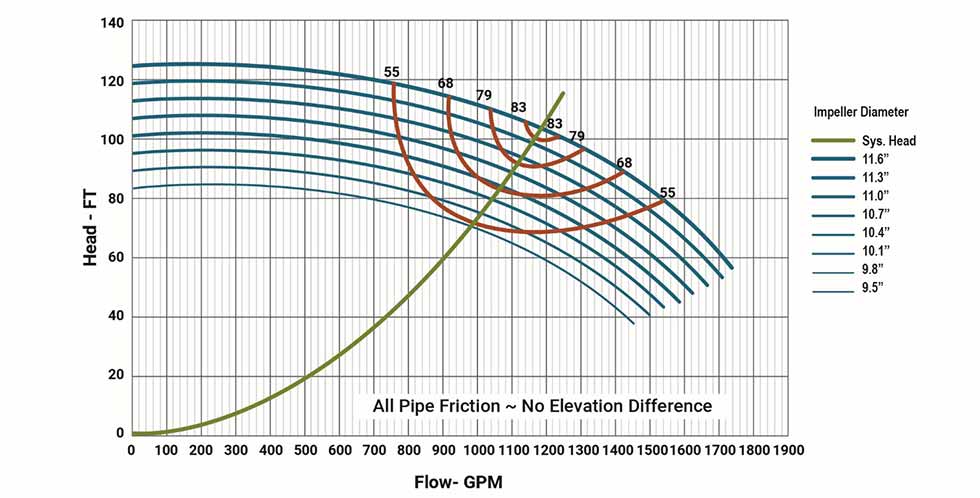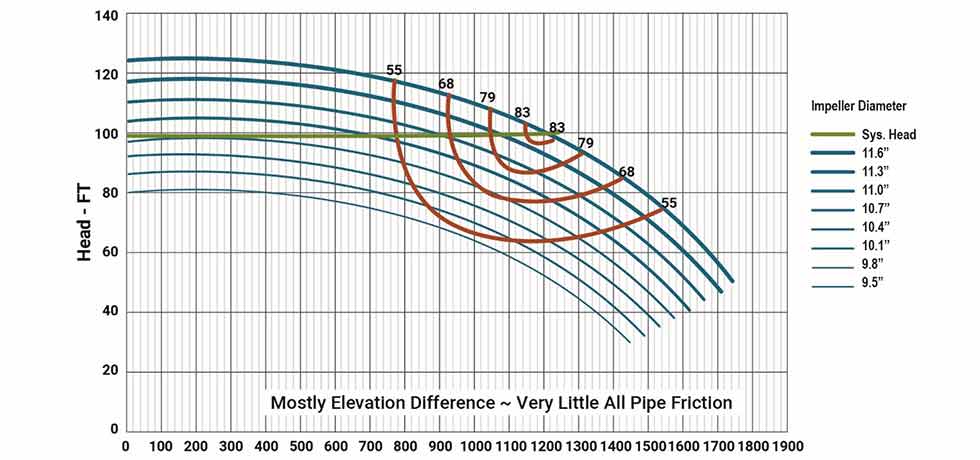
One important element of pump reliability comes from running the machine at its best efficiency point (BEP). There are many articles and papers documenting the reliability and power-saving benefits of operating machines in this manner.
Despite this weight of opinion, many machines do not run at BEP. The machines that run far away from BEP and suffer from severe reliability problems may be addressed, but this still leaves many machines running in a distressed manner. Most machines have bad habits caused by off-design flow.
If we were to apply the analogy of a motor vehicle operated in the same way, we would say that it was being driven in the wrong gear with the hand brake on. Only on the machines that fail frequently is this issue addressed. We would never do this to our cars, but we do this to centrifugal pumps.
The following is a simple strategy to address the machines that we give little attention to. The power savings alone from matching pumps exactly to their systems could drastically reduce global power demands. Layer on top of this the reliability benefits and the argument for change should be compelling.

Understand the Pump Within the System
It is not only the pump that is important; how the pump interacts with the system curve is the real issue, and understanding the shape of that system curve provides great insight. The two extremes depicted in Images 1 and 3 are intended to demonstrate how identical pumps interact with the different systems. If a process change requires the pump duty to change, the strategy for the pump could be different in each case.
In Image 1, solutions involving variable speed drives (VSD) or tip speed modification may work well. In Image 3, this type of solution may be less effective. Even if solutions to reliability issues do not appear apparent immediately, knowing the situation faced by the equipment is an important first step.
Modify to Improve Operating Regime
The pump that was purchased to run in the system is often incorrectly sized. Pumps are selected for future duties or to cope with operation conditions that occur infrequently.
Many machines can be modified to run closer to BEP by modifying the impeller. Improving the impeller blade geometry to control the suction habits of the machine can improve net positive suction head required (NPSHr) and mitigate bad low-flow habits. This in turn improves vibration and reliability.
Modifications to the impeller discharge can help to change the BEP flow and help the pump run closer to its design point. Modifying the casing along with the impeller can bring BEP close to the operating point.
Reviewing the head being dissipated across the pump control valve, or the percentage amount the valve is closed, is generally a straightforward assessment to make. Power is being used to generate head and then this excess head is being dissipated across the valve. A valve can be thought of as a variable resistance in the line. This is the hand brake analogy, and you can take it off with a simple modification.

Mitigate When Modification Is Not Possible
Pump manufacturers make machines that are intended for many different applications and systems. The machines are rarely designed to suit the exact need of the process. Cost, investment and opportunities to standardize all come into play. Reliability features that increase machine cost are rarely included.
There are always lower cost opportunities to mitigate reliability issues within a machine that do not have to be expensive. If the hydraulics cannot
be modified, it may be possible to mitigate some of the consequences of the hydraulic design by improving the mechanical design, including:
- Shaft systems or bearing hanger designs can be made stiffer.
- Seals and support systems selection can be modified to improve seal reliability.
It is also important to note that not all failures are a consequence of running off design. Preventing failure by attention to detail can provide great benefits.
- Bearing isolators—an easy and straightforward upgrade—can prevent bearing contamination.
- Balanced oilers help maintain oil levels in a more reliable way.
Understand, Modify & Mitigate
Pumps are designed by manufacturers to adapt to many applications and system curve shapes. The design philosophy means that no pump is ideally suited to the situation it is applied. The pump is an all-rounder, not a specialist. There is always a compromise. Following the understand/modify/mitigate strategy can provide a road map to incremental reliability and power savings.


